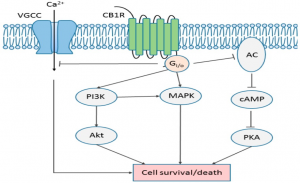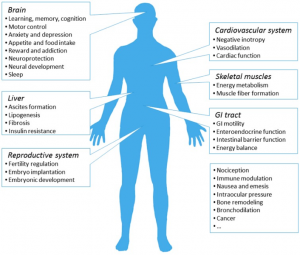Many of us wonder where we will be in ten, maybe twenty years from now regarding our health. What will the health care system look like? Will it be improved? What advancements will be made that prolong life as well as improve quality of life?
Let’s take a look through the crystal ball to see what the future has in store…
Congrats! I see cannabis in your future!
That’s right. Cannabis. You might be surprised, maybe even unhappy with these results, but the truth is that there are some pretty neat findings involving cannabis and the endocannabinoid system that may be beneficial to your health.
Cannabidiol (CBD) is an essential component of medical marijuana/cannabis. The CBD industry is growing at exponential rates and will continue to grow. It is your choice if you are going to jump on board with these products that are rapidly growing in popularity.
Cannabis has been used throughout history and has been used for a diverse range of medical purposes. However, although cannabinoids have therapeutic potential, their psychoactive effects have largely limited their use in clinical practice.
Understanding the Crystal Ball
The science described below will help explain the reason for the wide range of effects associated with the endocannabinoid system.
The Cannabinoid Receptor (CB1): CB1 receptors are members of the Gi/Go – linked GPCR family. This means they inhibit voltage sensitive calcium channels and adenylyl cyclase. On the other hand, CB1 receptors regulate the activity of G-protein coupled inwardly rectifying potassium channels and stimulate the MAPK signaling pathway. The figure below shows the activating and inhibiting roles of the CB1 receptor.

Fig. 1
Inhibition: adenylyl cyclase (AC), formation of cyclic adenosine monophosphate (cAMP), activity of protein kinase A (PKA), calcium influx via voltage-gated calcium channels (VGCC).
Activation: MAPK signaling pathway and PI3K/Akt pathway
The CB1 receptors are widely spread throughout the body, thus giving reason to the broad spectrum of physiological roles these receptors can play. With this being said, research has shown the endocannabinoid system to be largely involved in various central neural activities and disorders including appetite, learning and memory, anxiety, depression, schizophrenia, stroke, multiple sclerosis, neurodegeneration, epilepsy, and addiction. The figure below shows the different regions the CB1 receptor is involved in throughout the human body.

Fig. 2
The widespread expression and versatile functions of CB1 receptors support its potential as a drug target for various diseases. However, the undesired effects that arise immediately or later on in life should not be ignored.
The Future is in Your Hands
Nobody can know for sure what the future will bring from these findings, but we can always be optimistic. Ultimately, if individuals are using cannabis for health related reasons and it is improving their quality of life, then there is no point in judgement.
With the growing CBD industry, there are many questions that arise. There are so many different directions to go with the endocannabinoid system that can potentially lead to finding drugs that benefit human health and, of course, improving human health is the ultimate goal. I hope we all go on to live healthy lives. If that life involves drugs targeting the endocannabinoid system, then so be it. The future is in your hands!
For more information on the research presented on the endocannabinoid system follow this link: https://www.ncbi.nlm.nih.gov/pmc/articles/PMC5877694/
